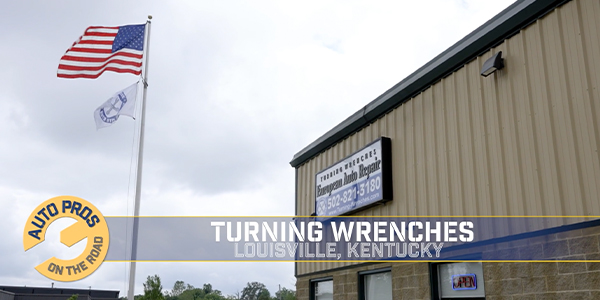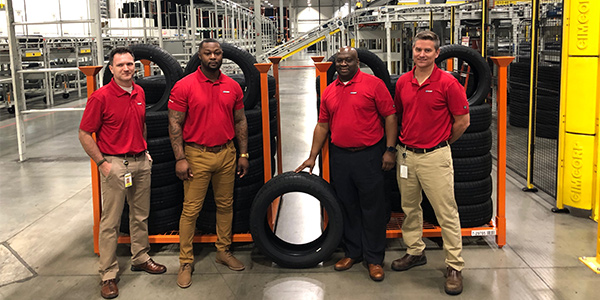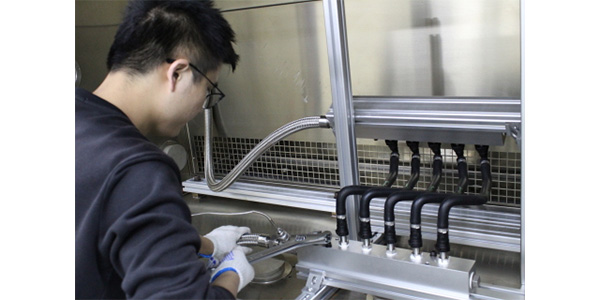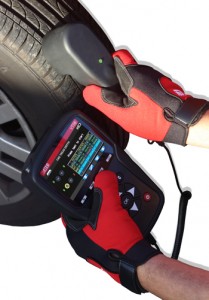
To understand any replacement sensor, you have to understand this: Sensors only transmit – they do not receive – when they are on a vehicle. No vehicle asks a sensor, “How’s it going?” The sensor just transmits. The vehicle is looking for a sensor ID number that corresponds with the one programmed into the module, then the temperature and pressure information. Some vehicles are also able to receive battery information.
Sensors do seem to receive signals when the vehicle is in relearn mode and the technician holds a TPMS tool to the sidewall of a tire. The tool excites the transmitting antenna with either a magnet or radio signal at a preset frequency. This is more like a “poke” or “nudge” that triggers the device, not a two-way conversation.
In normal operation, sensors transmit information at programed intervals when the accelerometer is activated by movement or if the pressure sensor detects sudden deflation of the tire. When a sensor is moving, it is transmitting information in 15-, 30- or 60-second intervals depending on the application. If the vehicle does not hear from a sensor, it will illuminate the TPMS light and maybe warn the driver with a message in the drive-information center.
The sensor will also stay active approximately 10-20 minutes after the car is in park. Knowing the exact amount of time required for the sensor to go to sleep can be helpful for some relearn procedures. If a relearn procedure is attempted on some vehicles with the sensors active, the relearn procedure can become impossible because the system might hear more than one sensor talking at a time.
Some vehicles may require a preset drive cycle so the sensors can transmit and the TPMS module can match the sensor IDs and locations.
When the sensor is poked, it will transmit its sensor ID and other required information. This must be done in a predetermined sequence so the vehicle module knows where each sensor is positioned.
Types of Replacement Sensors
There are three types of replacement sensors:
1) Direct replacement sensors: These sensors are the same as the sensors they are replacing, and they transmit the same information.
2) Programmable sensors: These sensors are blank when pulled out of the box. It is up to the shop to program the sensor using a special tool or programming pad connected to the computer. The tool or pad will program how the sensor should behave and the sensor ID number. If you have a weak or damaged sensor that is still transmitting, the old sensor information can be pulled using the pad or tool so it can be burned onto the new sensor. Some manufacturers call this “cloning.”
3) Universal sensors: These sensors come programmed with multiple vehicle communication and relearn protocols so the sensor is compatible with many vehicles in a designated frequency range. For some applications, these sensors may need a scan tool to input new sensor ID numbers into the TPMS module.
Each sensor type has its advantages and disadvantages. It is up to you to decide which suits your business and customers before committing to a program.
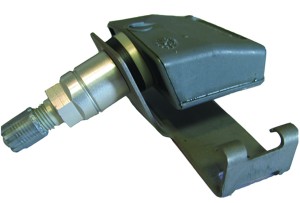
Service Kits
If your shop sells or services even a few tires a week, your shop should stock an assortment of service kits. Most tire product suppliers have cabinets filled with the kits you will need most. Not having the parts to service sensors might leave a car stuck in a bay that could be used for other repairs. Consider these consumables that should be restocked often.
When it comes to service kits and servicing tires, training is also needed. If the items inside of a service kit are not installed properly, the result could be a slow leak at best or a catastrophic failure of the tire at worst. Tightening the nut more will not eliminate a leak. The sealing grommets are engineered to work at a specific torque, so any torque above the specified value will cause the seal to leak. The extra force may damage the nut and stem or fracture the sensor body.
With multiple companies producing replacement sensors, there can be issues with servicing replacement sensors. You might find that three sensors are stock while a fourth is a non-direct replacement sensor. You will have to find out the sensor’s manufacturer and which service kit fits that sensor and vehicle for the original manufacturer. But a lot of these replacement sensors can be serviced with a few part numbers.
Preparing for the Battery Bubble
Every vehicle made in 2008 and later must be equipped with TPMS, and the majority of these systems use sensors with batteries. Most of these sensors are covered under the basic “bumper-to-bumper” warranty for 30,000-50,000 miles.
Battery life depends on a variety of factors including the sample rate, drive cycle of the customer and even the environment. If a sensor transmits the pressure every 10 seconds, it will not last as long as a sensor that transmits the pressure every 15 seconds. Some sensors may last as long as 10 years while some may last only three to five years. But, the general consensus is 70,000-100,000 miles or seven to 10 years before the battery dies. This means there are a considerable number of vehicles that will start to need replacement TPMS sensors.

